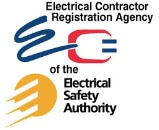Old Fuse Panel Electrical Shock Hazards
Electrical installation methods, codes and product standards have evolved significantly
over the past 100 years in Ontario and across North America. Over time, the standards
for electrical products and installations have been updated to address safety issues that
have arisen.
Ontario Electrical Safety Code (OESC) Rule 14-206 and product standards (CSA
Standard C22.2 No.29, “Low Voltage Distribution and Control”) require panelboards
containing breakers or plug fuses to have barriers and/ or covers that eliminate
exposure to energized parts where these panelboards are readily accessible to
unauthorized persons for operation of the breakers or changing of fuses.
OESC Rule 14-206 Fuse Holders for plug fuses states:
Fuseholders for plug fuses shall be of the so-called “covered” type where readily
accessible to unauthorized persons.
Some homes, apartments and other buildings across Ontario still have old electrical
fuse panels that were installed prior to 1940. These panels complied with the codes and
standards at the time of installation. If maintained properly, complete with the correct
size and type of fuses, these panels will still be adequate to protect electrical circuits
and equipment. However, it has been identified that opening the panelboard cover of
some of these fuse panels gives access to bare and exposed energized terminals,
which may pose electrical shock hazards to unqualified persons.
Due to the potential shock hazard associated with these open type panels in residential
dwellings, the Electrical Safety Authority (ESA) will be mandating the following when the
dwellings are Rental/Tenant occupied (not owner occupied):
• Fuse panels shall be provided with covers that are only capable of being opened
with the use of a key/tool; and
• a warning label shall be placed on the cover of each panel stating:
“Danger Exposed Energized Parts, Consult Landlord for Service” (or
equivalent wording).
This will meet the intent of the current OESC and standards by rendering the internal
parts of the panelboards not readily accessible.
Additional ESA Recommendations:
If a property owner wishes to upgrade their older electrical panels to provide a higher
level of electrical safety than the minimum mandated above, other available options
could be:
1) Replace the fuse panels and panel enclosure with new breaker panels.
2) Retro-fit new breaker panel interiors into the existing fuse panel enclosures
(contact breaker panel manufacturer to see if breaker panel retrofit kits are
available for existing enclosure dimensions)







